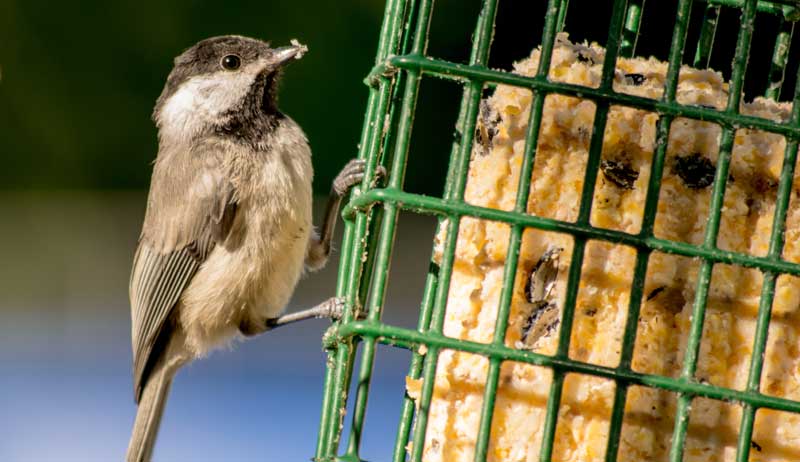
Sunflowers are still vibrant and healthy through August and September, into the early days of autumn. As they start to fade, prepare for ways to use the spent flower heads.
Sunflowers are not just beautiful, but they are beneficial, too. Once the beauty of your sunflowers fades, they can be used as future seeds, food and autumn decorations. Here’s how to harvest sunflower seeds, followed by five ways to prepare sunflowers once they have started to die back.
Harvesting the Seeds
If you plan to use the seeds for replanting or preparing for food, you will need to harvest and remove the seeds by cutting them back from the stalk once they have started to dry out. You’ll know it is time when the back of the flowerhead is turning yellow, most petals have dried up and fallen, and the seeds appear loose. If you want to speed the process up, you can cut bunches and hang them to dry.
De-seeding the sunflower is very simple if the flower is dried enough. Most seeds will be loose and ready to easily come away from the stalk. Firmly rub the seed head over a bucket to catch the falling seeds. Small blooms and other debris will also collect in the bucket.
Once you have completed this process with all your sunflowers, collect a colander or strainer to begin separating the debris.

Depending on the amount of debris, you will decide if shaking the seeds in the strainer is effective or if you will need to run water over them. If you choose to run water, you will need to make sure they spend adequate time in the drying process so no moisture creates mold and the integrity of the seed is not compromised.
After separation, line a cardboard box or crate with newspaper or paper towels, and spread the seeds evenly in a single layer. They will need to dry a few hours or even overnight depending on how much moisture they have.
Use Your Sunflower Seeds
Now that the seeds have been harvested, cleaned and dried, you can use them for the following purposes.
Replanting
Place the seeds you plan to replant next year in an airtight container. Label the container and store them in a cool, dark place.
Roasting
Many people love to flavor and roast sunflower seeds. The large mammoth varieties are best for eating. Once the seeds are cleaned and dried you will want to:
- Boil the seeds in salted water to add flavoring. If you do not like salt, you can move straight to the final step. The ratio should be 1 cup seeds to 1 qt. water to 2 tbsp. salt.
- Bring to a boil and simmer for 15 to 20 minutes.
- Drain the water from the seeds.
- Place the drained seeds in a single layer on a baking sheet.
- Cook in the oven at 400 degrees for 10 to 20 minutes.
Raw Snacks
Sunflowers aren’t at risk for rapid spoilage. If they are kept in a cool, dark place, they can last two to three months without needing refrigeration. Once they are cleaned of debris, they are ready for raw snacking.
Suet Cakes
Bird suets are valuable food for birds and chickens in the winter months. It is a mixture of fatty foods and proteins, and sustains birds and chickens when a lot of food they forage in warmer months has died. It’s also best for winter months because the cooler temps allow the ingredients to stay solidified and not melt.

Here’s how to make suet cakes:
- Gather ingredients: 16 oz. lard, 16 oz. crunchy peanut butter, 1 cup cornmeal, 1 cup flour, 2 cups sunflower seeds
- Mix all ingredients in a large mixing bowl and incorporate well.
- Line a baking sheet with parchment paper and transfer the dough
- Create a flat, rectangle shape.
- Place the baking sheet in a freezer for four hours.
- Once the suet cake is frozen thoroughly, cut the rectangle into appropriate sizes for whatever feeder you will use.
- You can freeze the remaining suet cakes for up to six months.
Decorating
Preserving sunflowers creates beautiful autumn decor both for your home and as gifts for others. You can create mementos for special events or just display your garden longer for special and unique pieces of art. Preserved sunflowers look beautiful with fall decorations, including wreaths or vase arrangements.
To preserve sunflowers, you will need to harvest earlier than you would for collecting seeds. To dry sunflowers for display, select flowers with heads that are mostly open. The back of the flowerhead will still be a vibrant green, and also look for flowers with petals mostly intact.
To speed up the drying process, you will want to remove the pollen heads and petals from the sunflower. Next, bundle a few flowers with rubber bands and hang upside down somewhere in the shade outside and allow them to dry completely. This should take two to four weeks to remove all moisture.
You can use a clear hairspray before using sunflowers as decor inside. Display dried sunflowers in vases, on wreaths, in shadow boxes or tied to your autumn gifts.




